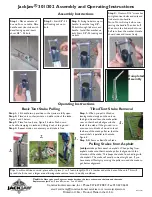
User Manual
Doc. Number: ESO-323064
Doc. Version: 2
Released on:
Page:
51 of 82
Document Classification: Public
•
If the observing date is known, it may be useful to compute the radial velocity shift
due to orbital and rotational movement of the Earth. Alternatively, the tool allows the
user to select the best time of the year to observe an object so that the targeted
feature avoids a specific telluric line.
Sky
tab:
•
The sky conditions are defined in terms of airmass, moon phase (range: 0
–
360
),
angular distance between the moon and the target (range: 0
-180
) and PWV (see
Sec 5.2.2 and Sec 5.2.3).
•
By specifying the vertical amount of PWV in the atmosphere, the ETC uses the
appropriate emission and transmission spectra for the PWV and airmass chosen.
This functionality allows one to determine if the SNR will be or not affected by water
vapor. One should note that the effect of water vapor lines also depends on the
temperature at the time of observation, as well as the altitude of the layers where
the water vapor is concentrated, therefore limiting the accuracy of the SNR
determination to a few 10%.
•
Because the AO correction degrades with airmass, when the NGS mode is selected,
we suggest limiting the airmass to ~1.4.
Seeing and IQ
tab:
•
For NoAO observations, the desired seeing condition is defined either in terms of
requested TC or image quality (IQ) at a given reference wavelength. The ETC
provides automatic conversion between the TC (i.e., phase 1 constraint) and IQ (i.e.,
phase 2 constraint).
•
The seeing is given exclusively in term of TC when the AO mode is selected. Hence,
in this case, TC is the relevant constraint for phase 1 and 2. AO observations are
restricted to TC= 10%, 20%, 30%, 50%, 70% and 85%. SNR calculations for larger
values in this mode are not supported by the ETC as AO in those conditions would
result in an insignificant correction.
•
When the AO mode is selected, the R mag, B-V colour, spectral type and target
separation of the NGS must be specified. Suitable NGS can be retrieved from online
catalogues available at Simbad/Vizier, or from Gaia-DR2 after having transformed
the Gaia magnitudes to the Johnson-Cousins system
3
.
Instrument
tab:
•
The instrument setup is defined in terms of setting (i.e., Y1029 see Table 13, column
1), and grating orders.
Exp.Time and S/N
tab:
•
Requested output can be either the exposure time to achieve a given SNR or the
SNR achieved in a given exposure time. In both cases the DIT needs to be specified.
•
The SNR corresponds to that obtained by integration over a user-defined aperture
(in spatial pixels). The available options for the aperture are in unit of 2xFWHM_IQ
and diffraction limited PSF core for the NoAO and AO modes, respectively
3
Gaia
DR2
Photometric
Transformations
are
available
at
https://gea.esac.esa.int/archive/documentation/GDR2/Data_processing/chap_cu5pho/sec_cu5pho
_calibr/ssec_cu5pho_PhotTransf.html
















































